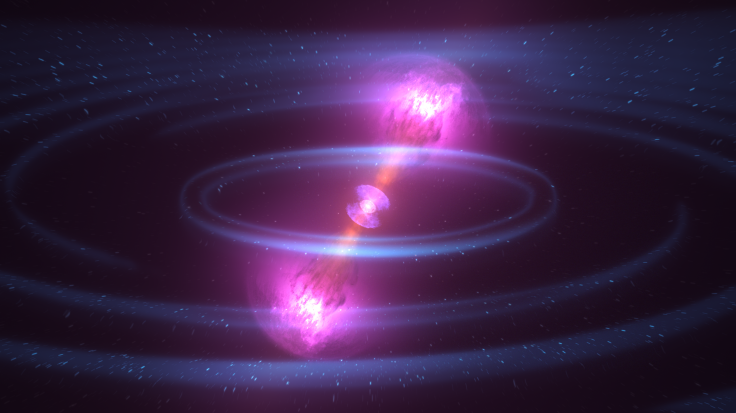Heaviest Neutron Star Preys On Its Mate Like A Black Widow, Scientists Find
KEY POINTS
- The neutron star is named PSR J0952-0607
- It was observed by the 10-meter Keck I telescope in Hawai'i
- Its mass is 2.35 times higher than the sun's
Scientists have found the heaviest neutron star to date, and it actually consumes its companion star in what is called a black widow system.
The binary system consists of two stars, in which one devours the other and grows in size.
Called PSR J0952-0607, the neutron star in question was observed by the 10-meter Keck I telescope on Maunakea in Hawai'i. It spins at 707 times per second, making it the fastest spinning neutron star in the Milky Way galaxy, the University of California - Berkeley noted in a news release.
Neutron stars are very dense that about 1 cubic inch of them weighs over 10 million tons. This makes their cores the densest matter in the universe, second only to black holes.
Heaviest #neutron star to date is a '#blackwidow' eating its mate @AAS_Office https://t.co/UR6C2LvJrI
— Phys.org (@physorg_com) July 26, 2022
At 2.35 times the mass of the sun, the pulsar PSR J0952-0607 will help astronomers make sense of the unusual quantum state of matter inside these dense objects. If they get even heavier, they may collapse completely and disappear as a black hole, according to the scientists whose study was published in the Astrophysical Journal Of Letters.
"By combining this measurement with those of several other black widows, we show that neutron stars must reach at least this mass, 2.35 plus or minus 0.17 solar masses," Roger W. Romani, professor of astrophysics at Stanford University and lead author of the study, said in the news release.
Growing beyond this threshold, the neutron stars may turn into a black hole.
In the event that 2.35 solar masses is near the upper limit of how much neutron stars can weigh, then the interior is most probably a soup of neutrons as well as up and down quarks, which are found in normal protons and neutrons but not unconventional matter like "strange" quarks or kaons.
Meanwhile, the name "black widow" is in reference to how black widow spiders consume male spiders after mating. "In a case of cosmic ingratitude, the black widow pulsar, which has devoured a large part of its mate, now heats and evaporates the companion down to planetary masses and perhaps complete annihilation," the news release quoted Alexei Filippenko, co-author of the study, as saying.
The stars are at a distance of 3,000 light-years from Earth, toward the constellation Sextans.
"This is right at the limit of what the Keck telescope can do, so barring fantastic observing conditions, tightening the measurement of PSR J0952-0607 likely awaits the 30-meter telescope era," Romani added.

© Copyright IBTimes 2025. All rights reserved.





















